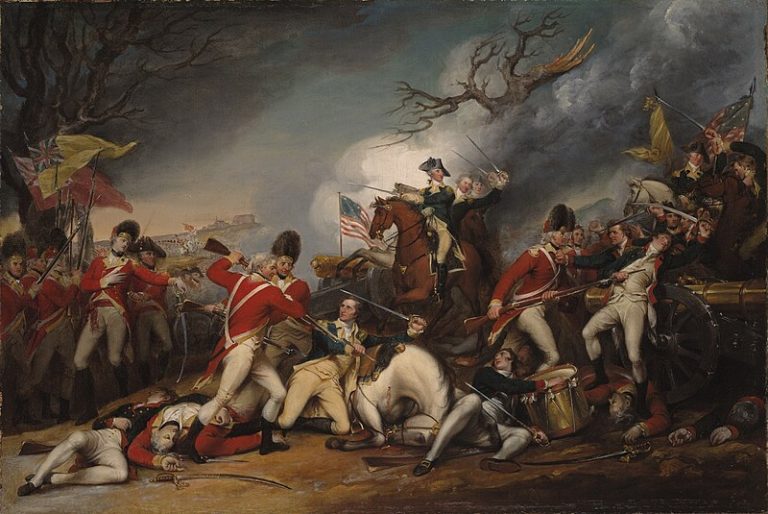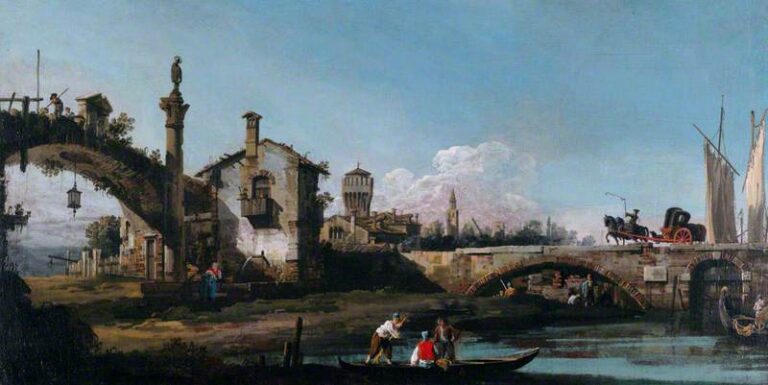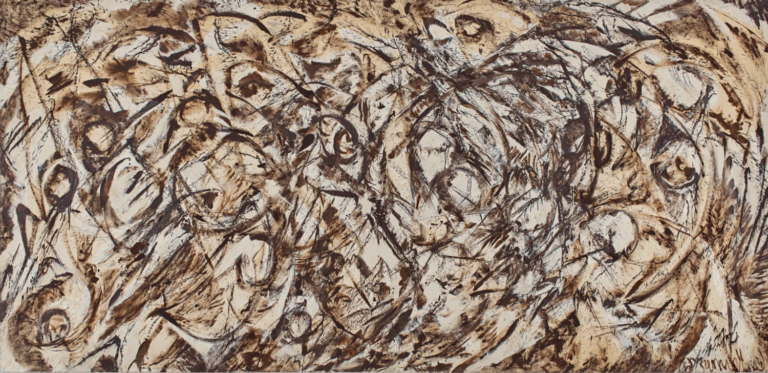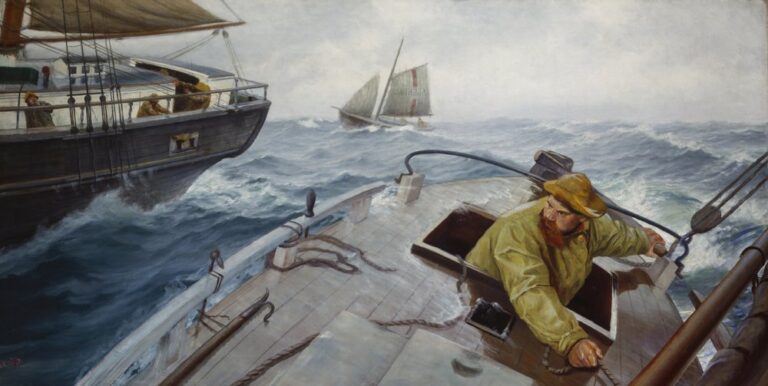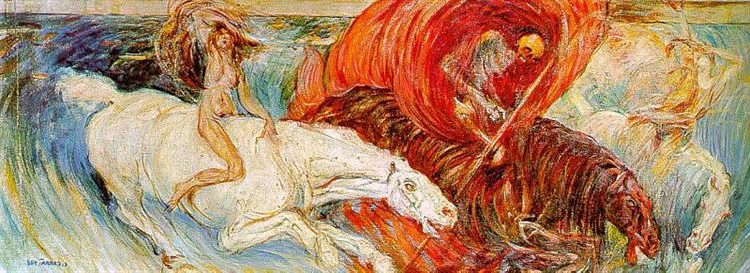Wilhelm Bendz Painter: Danish Romantic Artist of the Golden Age
Born: 20 March 1804, Odense, Denmark
Death: 14 November 1832, Vicenza, Austrian Empire
Art Movement: Danish Golden Age
Nationalité : Danois
Teacher: Christoffer Wilhelm Eckersberg
Institution: Royal Danish Academy of Fine Arts
Wilhelm Bendz Painter: Danish Romantic Artist of the Golden Age
Life and Career of Wilhelm Bendz
Wilhelm Ferdinand Bendz (1804-1832) was a talented Danish painter. His portraits réalistes et scènes de genre captured the everyday lives of his fellow artists with impressive detail and technical skill.
Vie et éducation précoces
Wilhelm Bendz showed artistic talent from a young age. At sixteen, he moved to Copenhagen to pursue formal training at the Royal Danish Academy of Fine Arts.
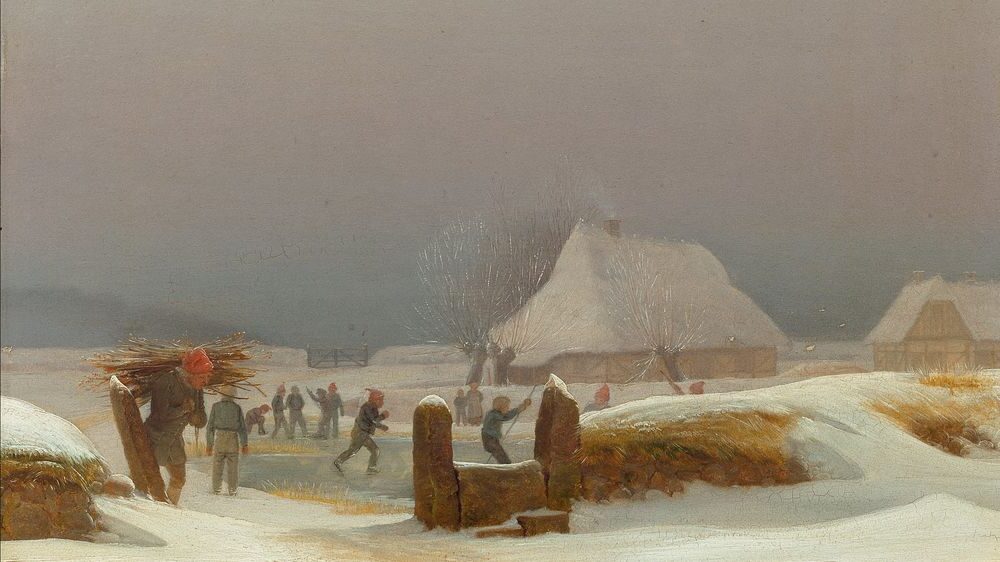
Winter Landscape from Funen, 1831, by Wilhelm Bendz
Bendz studied at the Academy from 1820 to 1825, developing strong technical skills in drawing and painting. His early works demonstrated careful observation and attention to detail.
During his education, Bendz formed close relationships with other young artists. These friendships would later become the subject of many of his most celebrated paintings.
Professional Development and Achievements
After completing his education, Bendz quickly established himself in the Danish art scene. He became known for his realistic portraits and genre paintings that depicted the daily lives of his artist colleagues.
Bendz’s work stands out for its technical precision and authentic portrayal of indoor scenes. His paintings often feature warm, intimate settings with careful attention to light and shadow.
In 1830, Bendz received a travel scholarship which allowed him to visit Munich and expand his artistic horizons. This opportunity exposed him to new artistic influences and techniques.
Influence of Christoffer Wilhelm Eckersberg
Bendz studied under Christoffer Wilhelm Eckersberg, who was a prominent figure in Danish painting and is often called the “Father of Danish Painting.”

Artist in the Evening at Finck’s Coffee House in Munich, 1832
Eckersberg’s emphasis on direct observation and precise rendering of subjects greatly influenced Bendz’s artistic approach. This is evident in Bendz’s careful depiction of interiors and the natural poses of his subjects.
Following Eckersberg’s teachings, Bendz developed a style characterized by clarity, realism, and careful composition. He combined these technical skills with a warm sensitivity that brought his scenes to life.
Bendz’s work reflects Eckersberg’s influence but also shows his own distinctive style, particularly in his portrayal of light and the casual intimacy of his scenes. Sadly, his promising career was cut short when he contracted a lung infection while traveling in Venice, Southern Europe, leading to his death on November 14, 1832, at only 28 years old.
Style artistique et œuvres majeures
Wilhelm Bendz developed a distinctive artistic style characterized by sophisticated lighting, complex compositions, and realistic portrayal of everyday life. His work stands out for its précision technique and ability to capture the essence of his subjects.
Portraiture and Genre Works
Bendz excelled in portraiture, creating lifelike depictions of his collègues artistes and contemporaries. His portraits reveal not just physical likeness but also personality traits and social context. Unlike many painters of his time, Bendz incorporated hidden symbolism and intricate lighting effects in his work.

Room in Amaliegade with the Artist’s Brothers, c. 1826
His genre paintings focus on everyday scenes, particularly the daily lives of artists in their studios and social gatherings. “A Smoking Party” exemplifies this approach, showing artists engaged in conversation amid tobacco smoke, with careful attention to light effects and facial expressions.
Bendz’s work combines elements of Danish Golden Age painting with his unique vision for composition and lighting. He often painted interior scenes with multiple figures, using warm color palettes and dramatic contrasts.
Peintures remarquables
“A Sculptor in His Studio” (1827) stands as one of Bendz’s masterpieces, depicting the working environment of a sculptor with meticulous attention to tools, materials, and the creative process. The painting demonstrates his skill with complex interior lighting.
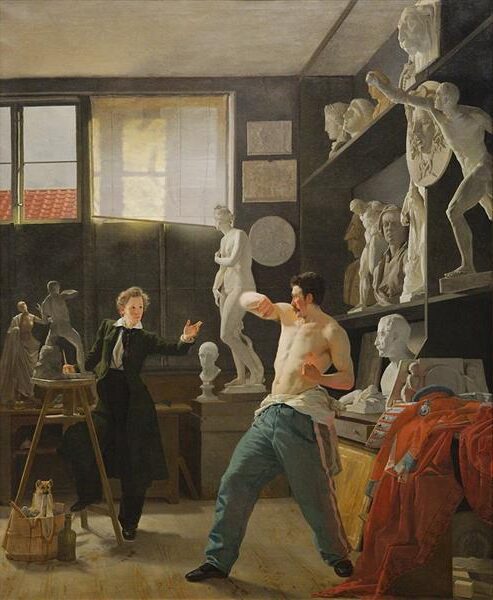
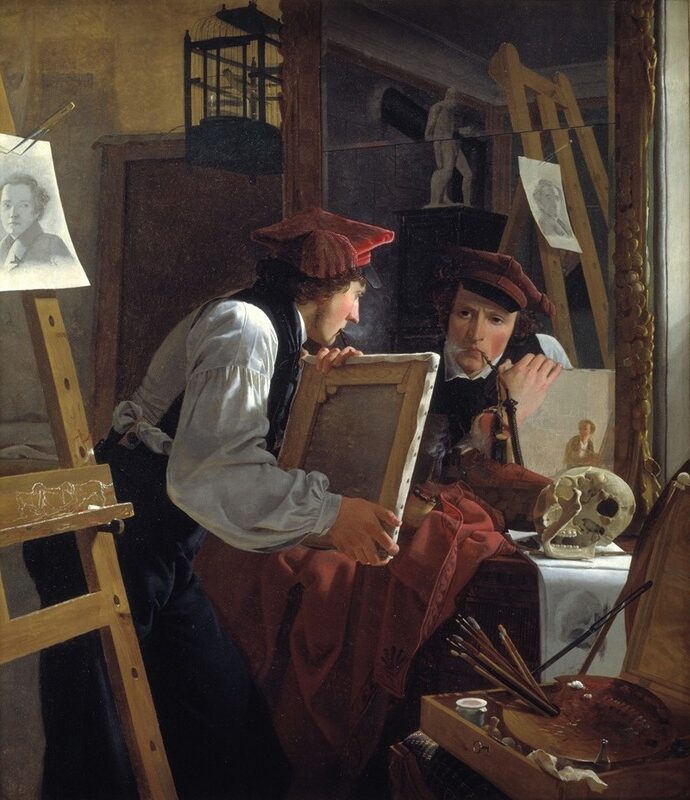
“Interior from Amaliegade” showcases Bendz’s talent for domestic scenes with its intimate portrayal of a Copenhagen apartment. His eye for detail extends to furniture, decorative objects, and the play of natural light through windows.
“Portrait of an Elderly Woman” reveals his sensitivity as a portraitist, capturing both dignity and character through careful brushwork and subtle facial expressions. The painting displays his technical skill with oil on canvas.
“The Church of Ramsau” represents his landscape work, though less common in his portfolio than his interior scenes and portraits. Even in outdoor settings, Bendz maintained his characteristic attention to architectural detail and atmospheric effects.
Héritage et réception
Wilhelm Bendz’s artistic contribution remained relatively underappreciated in his lifetime due to his untimely death at age 28. His legacy grew significantly in the decades following as art historians recognized his technical skill and unique perspective on Danish Golden Age painting.
Reconnaissance et expositions
Bendz’s work has been showcased in numerous exhibitions at prestigious venues, including regular displays at Charlottenborg in Copenhagen. His paintings depicting fellow artists in their studios have become valuable historical documents de Danish artistic life in the 1820s. The Kunsthallen Brandts in Odense has featured his works prominently, helping to introduce his art to contemporary audiences.

Model Class at the Copenhagen Academy, 1826
By 1830, Bendz had established a solid reputation as a talented portraitiste despite his young age. Art historians now consider him an important figure in Danish Golden Age painting, though his career was tragically cut short in 1832.
Many of his artworks have appeared at auctions, with collectors and museums recognizing their historical and artistic value. His detailed portrayals of everyday artistic life provide unique insights into the creative community of 19th-century Denmark.
Contemporary Reproductions and Customization
Today, Bendz’s paintings are available as high-quality reproductions through various art print services. Companies specializing in Kunstdruck (art prints) offer his works with multiple customization options to suit modern art lovers.

Mountain Landscape, 1831, by Wilhelm Bendz
Customers can preview Bendz’s paintings in different frames using online configurators. These digital tools allow art enthusiasts to visualize how the artwork might appear in their homes before purchase.
Some services offer Bendz reproductions on various printing mediums, including canvas, fine art paper, and even metal prints. Frame options typically include period-appropriate styles that complement his 19th-century aesthetic.
Quality reproduction services emphasize Bildqualität (image quality) to ensure faithful representation of Bendz’s precise brushwork and subtle color palette. Many retailers provide customer satisfaction guarantees and specialized shipping to protect these art reproductions during transit.
Questions fréquemment posées
Wilhelm Bendz’s brief but impactful artistic career left many curious about his work and influence. His contributions to Danish art remain significant despite his untimely death at age 28.
What are the most celebrated works of Wilhelm Bendz and their significance in art history?
Bendz’s most celebrated works include “A Smoking Party” and his portraits of fellow artists in their studios. These paintings showcase his remarkable ability to capture light and create intimate scenes.
His portrait of Christian Waagepetersen, the wine merchant, at his writing desk is particularly notable. This work demonstrates Bendz’s skill in portraiture and his attention to detail.
Bendz’s paintings are significant in art history for their realistic depiction of everyday life and their technical excellence, particularly in rendering interior scenes.
Which artistic movements or styles is Wilhelm Bendz associated with?
Bendz is primarily associated with the Danish Golden Age of painting, a period of exceptional artistic achievement in Denmark during the early 19th century.
His work displays characteristics of Neoclassicism with its emphasis on careful observation and precise technique. However, his paintings also show early elements of Romanticism in their intimate portrayal of human subjects.
Bendz’s style focuses on realism and detailed observation, placing him firmly within the academic tradition while showing his unique artistic voice.
Can you detail Wilhelm Bendz’s contribution to the Danish Golden Age of Painting?
Bendz contributed significantly to the Danish Golden Age through his masterful portraiture and genre scenes. His works helped define this important period in Danish art history.
He excelled at depicting the social life of artists and intellectuals, providing valuable visual documentation of cultural circles in Copenhagen during the 1820s and early 1830s.
Bendz’s technical skill in handling light, especially in interior scenes, enhanced the artistic achievements of the Danish Golden Age. His works displayed both academic precision and personal expression.
What were the primary themes and subjects depicted in Wilhelm Bendz’s artwork?
Bendz focused primarily on portraiture and genre scenes featuring his fellow artists, friends, and contemporaries. These works often depicted daily life in artistic circles.
He showed particular interest in capturing artists in their studios, revealing both their working environments and personalities. These paintings combine portraiture with elements of still life and interior scenes.
Social gatherings were another recurring theme, with Bendz portraying the intellectual and artistic community of Copenhagen with remarkable authenticity and attention to detail.
How did Wilhelm Bendz’s education and background influence his artistic approach and technique?
Bendz studied at the Royal Danish Academy of Fine Arts, where he received formal training in the neoclassical tradition. This education gave him strong technical foundations in drawing and composition.
He was influenced by his teacher Christoffer Wilhelm Eckersberg, known as the “Father of Danish Painting,” who emphasized direct observation and precise rendering of subjects.
Bendz’s middle-class background may have influenced his interest in depicting the everyday life of his peers rather than grand historical or mythological scenes.
What impact did Wilhelm Bendz have on his contemporaries and on future generations of artists?
Despite his short career, Bendz influenced his contemporaries through his technical skill and fresh approach to genre painting. His intimate portrayals of artistic life were highly regarded.
His work preserves valuable visual documentation of artist communities in Copenhagen. It provides insight into the cultural milieu of the Danish Golden Age.
Though his early death at 28 limited his influence, Bendz’s paintings continue to be valued for their quality and historical significance. They inspired later Danish artists’ approach to realistic portraiture and scene painting.



